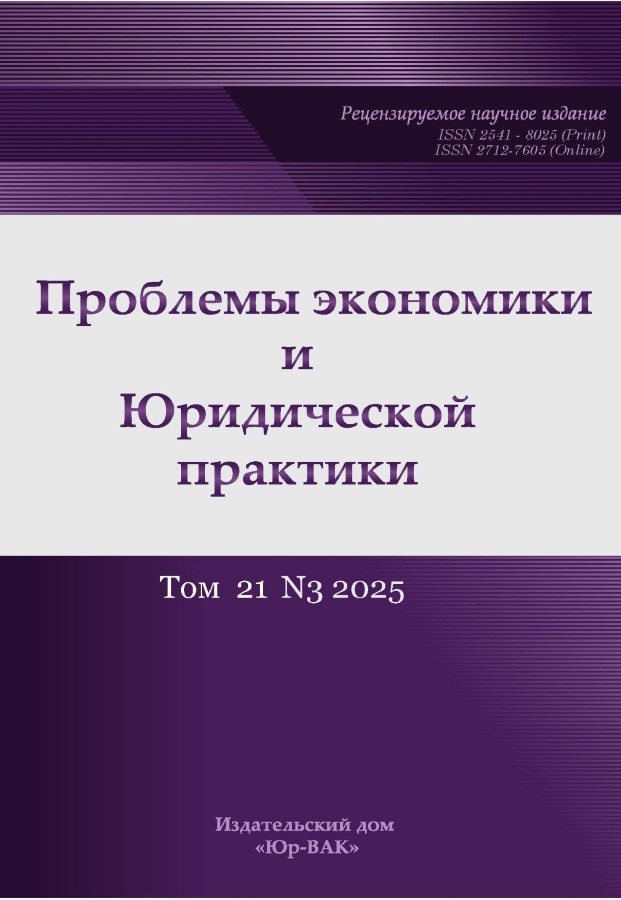Analysis of the Dynamics of Socio-Economic Development of the Siberian Federal District Based on Spatial Data
- Autores: Grineva N.V.1
-
Afiliações:
- Financial University under the Government of the Russian Federation
- Edição: Volume 21, Nº 3 (2025)
- Páginas: 125-135
- Seção: Mathematical, Statistical and Instrumental Methods in Economics
- URL: https://journals.eco-vector.com/2541-8025/article/view/688017
- DOI: https://doi.org/10.33693/2541-8025-2025-21-3-125-135
- EDN: https://elibrary.ru/WUFFLU
- ID: 688017
Citar
Texto integral
Resumo
Traditional approaches to economic modeling often ignore the spatial structure of data, which leads to distorted results in the presence of spatial dependencies. The scale of differences in the level of gross regional product per capita between the regions of the Siberian Federal District (SFD) reaches 10–15 times, which exceeds similar indicators in most developed countries. The analysis showed that external shocks can radically change the structure of regional imbalances, leading to unexpected effects of convergence or divergence. The purpose of the study is to analyze key indicators of the spatial development of the Siberian Federal District based on a comprehensive analysis. Within the framework of the work, the following tasks were solved: a systematic analysis of theoretical approaches to modeling the spatial development of regional economic systems was carried out; spatial autocorrelation was analyzed based on the calculated Moran indices; the dynamics of regional differentiation in the context of external economic shocks (pandemic, sanctions) was studied. The methodological basis of the research consists of the principles of system analysis, the theory of spatial economics, and the concepts of new economic geography. The methods of spatial econometrics and statistical methods of panel data processing were used in the work. The scientific novelty of the study is to identify and theoretically substantiate the phenomenon of «crisis convergence» in regional development, when external shocks lead to the smoothing of regional differences and establish the dominance of external shocks over internal factors of spatial development in modern conditions. The practical significance of the results obtained is determined by the possibility of using the results obtained by state authorities at the federal and regional levels to form spatial development strategies, increase the effectiveness of regional policy, and predict socio-economic processes in the face of external challenges.
Palavras-chave
Texto integral
Sobre autores
Natalia Grineva
Financial University under the Government of the Russian Federation
Autor responsável pela correspondência
Email: ngrineva@fa.ru
ORCID ID: 0000-0001-7647-5967
Código SPIN: 1140-9636
Scopus Author ID: 303847
Cand. Sci. (Econ.), Associate Professor, Associate Professor of the Department of Information Technology
Rússia, MoscowBibliografia
- Biyakov, O. A. (2019). Spatial autocorrelation and differentiation of economic development of Russian regions. Bulletin of the NSU. Series: Socio-economic sciences, 19(1), 29–43.
- Demyanenko, A. N. (2017). Spatial economics: the evolution of approaches and methodology. Spatial Economics, 4, 21–44.
- Kontseva, N. V. Grineva, N. V., Mikhailova, S. S. A systematic approach to data classification in problems of mathematical modeling of spatial development of the Russian Federation // Innovations and Investments. —2025. —No. 2. —pp. 525–529. —EDN ERTXZK.
- Kontseva N. V., Grineva N. V., Mikhailova S. S., Basnukaev R. M. Demographic processes in Russia: comparative analysis of predictive models / // Problems of economics and legal practice. —2025. —Vol. 21, No. 1. —pp. 195–211. —doi: 10.33693/2541-8025-2025-21-1-195-211. —EDN FLJBZJ.
- Popova, P. A., Bukina, T. V., Kashin, D. V. (2024). The influence of interregional spatial effects on the economic development of Russian regions. Journal of Applied Economic Research, 23(3), 751–775.
- Regions of Russia. Socio-economic indicators. (2024). Statistical collection / Rosstat. Moscow, 1081 p.
- Spatial Development Strategy of the Russian Federation for the period up to 2025. (2024). Approved by the Decree of the Government of the Russian Federation dated 02/13/2024 No. 207r.
- Anselin, L. (1995). Local Indicators of Spatial Association—LISA. Geographical Analysis, 27(2), 93–115.
- Batty, M. (2005). Cities and complexity: understanding cities with cellular automata, agent-based models, and fractals. Cambridge, MA: MIT Press.
- Doreian, P. (1980). Linear models with spatially distributed data: Spatial disturbances or spatial effects? Sociological Methods & Research, 9(1), 29–60.
- Fujita, M., Thisse, J. F. (2002). Economics of Agglomeration: Cities, Industrial Location, and Regional Growth. Cambridge: Cambridge University Press.
- Kelejian, H. H., Prucha, I. R. (2010). Specification and estimation of spatial autoregressive models with autoregressive and heteroskedastic disturbances. Journal of Econometrics, 157(1), 53–67.
- Krugman, P. (1991). Increasing returns and economic geography. Journal of Political Economy, 99(3), 483–499.
- Lösch, A. (1940). Die räumliche Ordnung der Wirtschaft. Jena: Gustav Fischer.
- Moran, P. A. (1950). Notes on continuous stochastic phenomena. Biometrika, 37(1/2), 17–23.
- Openshaw, S. (1984). The modifiable areal unit problem. Norwich: Geo Books.
- Porter, M. E. (1990). The competitive advantage of nations. New York: Free Press.
- Rodrigue, J. P., Comtois, C., Slack, B. (2017). The geography of transport systems. 4th edition. New York: Routledge.
- Tobler, W. R. (1970). A computer movie simulating urban growth in the Detroit region. Economic geography, 46(sup1), 234–240.
Arquivos suplementares













